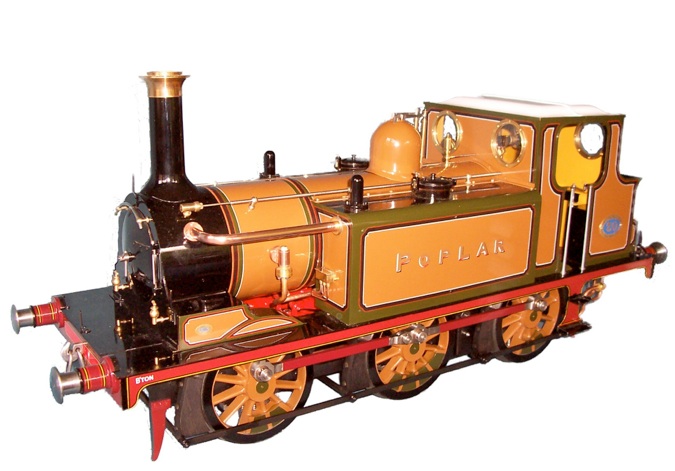



One of the engines, No.55 Stepney, was the first locomotive on the Bluebell Railway, the first preserved standard gauge steam passenger railway in the world when it opened in August 1960.
An initial six locomotives built in 1872 were followed by 44 more between June 1874 and September 1880. The first one was Poplar, the subject of Norman’s model. They were finished in the livery known as ‘Stroudley's Improved Engine Green’, which was not green at all but an ochre colour, an anomaly put down to Stroudley’s colour blindness.
No.40 Brighton was chosen by Stroudley to represent the LBSCR at the Paris Exhibition of 1878, winning a gold medal for workmanship. One found its way on to the Great Western via the the Weston, Clevedon and Portishead Railway.
The Terriers were designed for commuter trains on the busy lines in South and South-east London and the East London Railway under the Thames through the tunnel designed by Brunel Senior. The success of these locos on these lines was a major factor in the development of increasing numbers of commuters working in London. The result was that trains were heavier and shorter journey times were needed. The engines were replaced by the larger D class tank engines. However, the 'Terriers' were so reliable that they were put on other work, often finding use on branch line passenger and freight working and as shunting engines.
NORMAN Barber’s outstanding model of a Brighton Terrier was a highlight at the last Sandown Park show where it was awarded the Charles Kennion Trophy. It is based on the Martin Evans design from the 1960s but with some modification and added detail. Norman will give details of these in a short series of articles on MEWS.
The Stroudley Terriers were one of the most successful steam locomotives with working lives of up to 90 years. Many continue into their 14th decade as working preserved engines.
The LB&SCR A1 Class was designed by William Stroudley, and some 50 were built between 1872 and 1880, at Brighton Works. The engines were known as ‘Terriers’ due to their small size and the distinctive 'bark' of the exhaust. As the line developed some terriers were sold and others went into ownership of the Southern Railway from 1923 and by British Railways from 1948.
Many engines were then replaced by diesel or lost following the closure of branch lines, although a number continued working into the 1960s, notably on the Hayling Island line. The withdrawal of the remaining members of the class finally came in 1963, with the closure of the Hayling Island line. At the time of withdrawal, No.32636 (formerly 72 Fenchurch) was British Railways’ oldest working steam engine.
Eight Terriers were purchased privately for preservation, with two others being donated by British Railways to the Canadian Railway Museum and the National Railway Museum.
MEWS IS SPONSORED BY - MYFORD LTD - HARROGATE EXHIBITION - TEE PUBLISHING - MERIDIENNE EXHIBITIONS - LYNX MODELS - CAMDEN MINIATURE STEAM - TRANSWAVE CONVERTERS - MESSE SINSHEIM - CHRONOS - GS SUPPLIES - PAULTHECAD.CO.UK